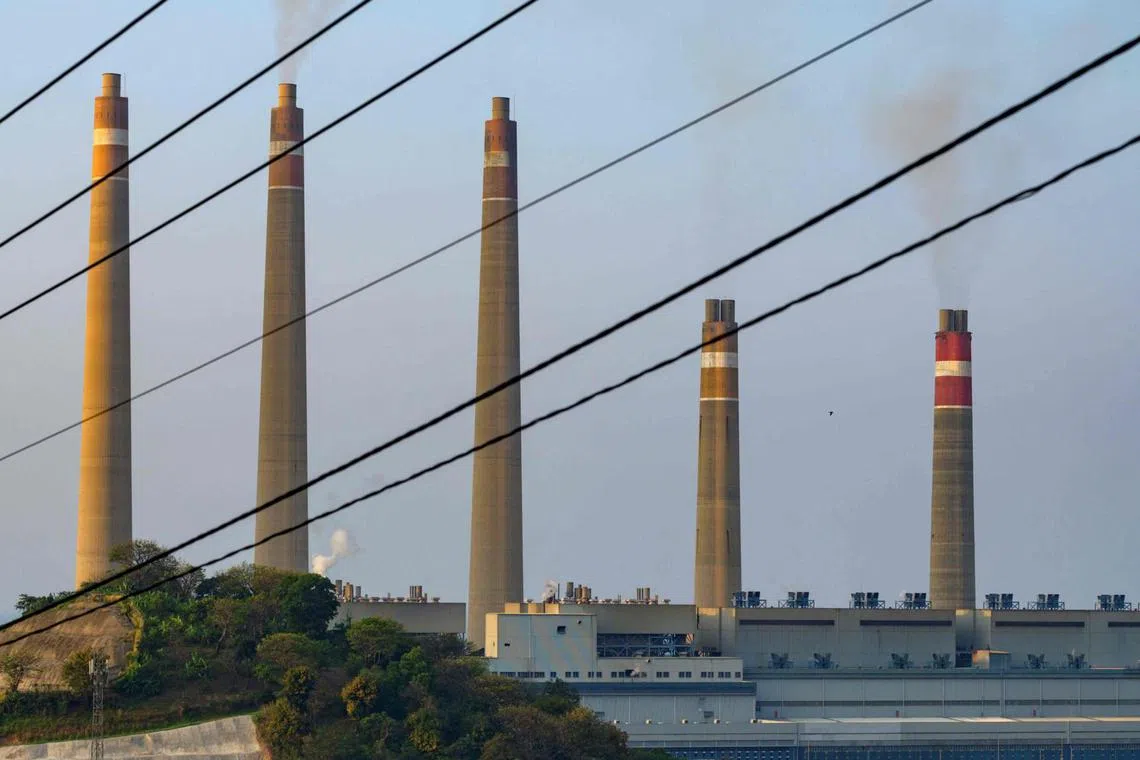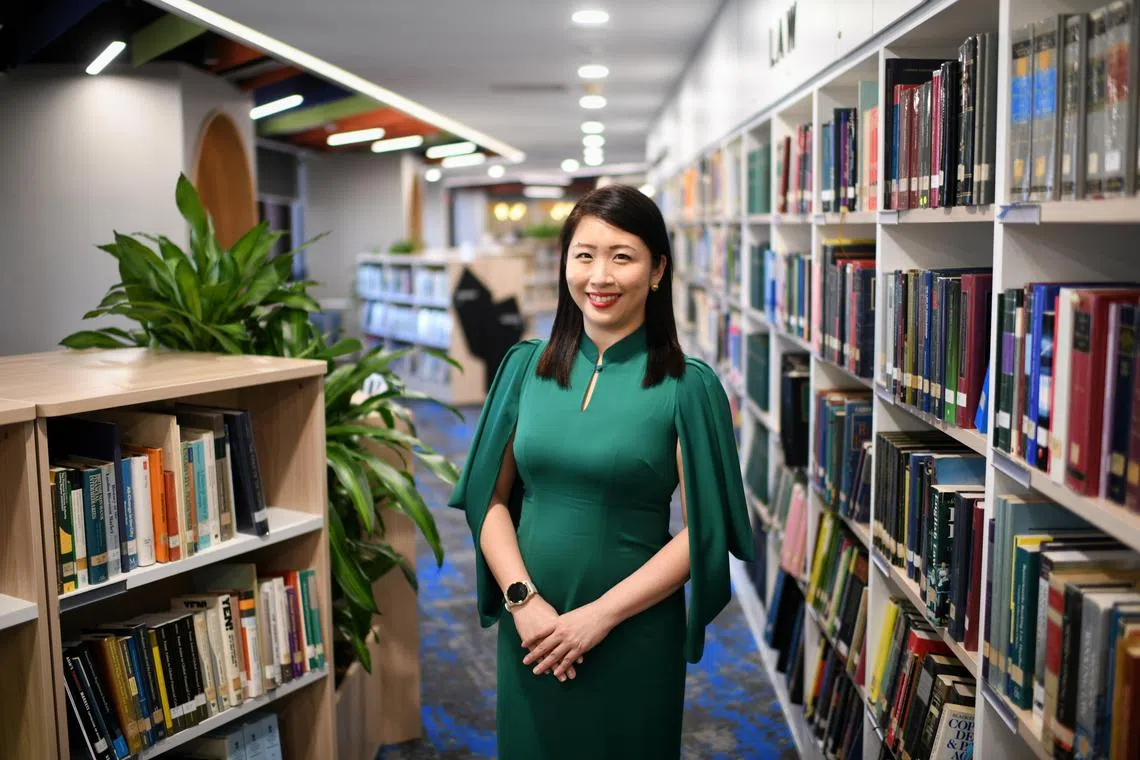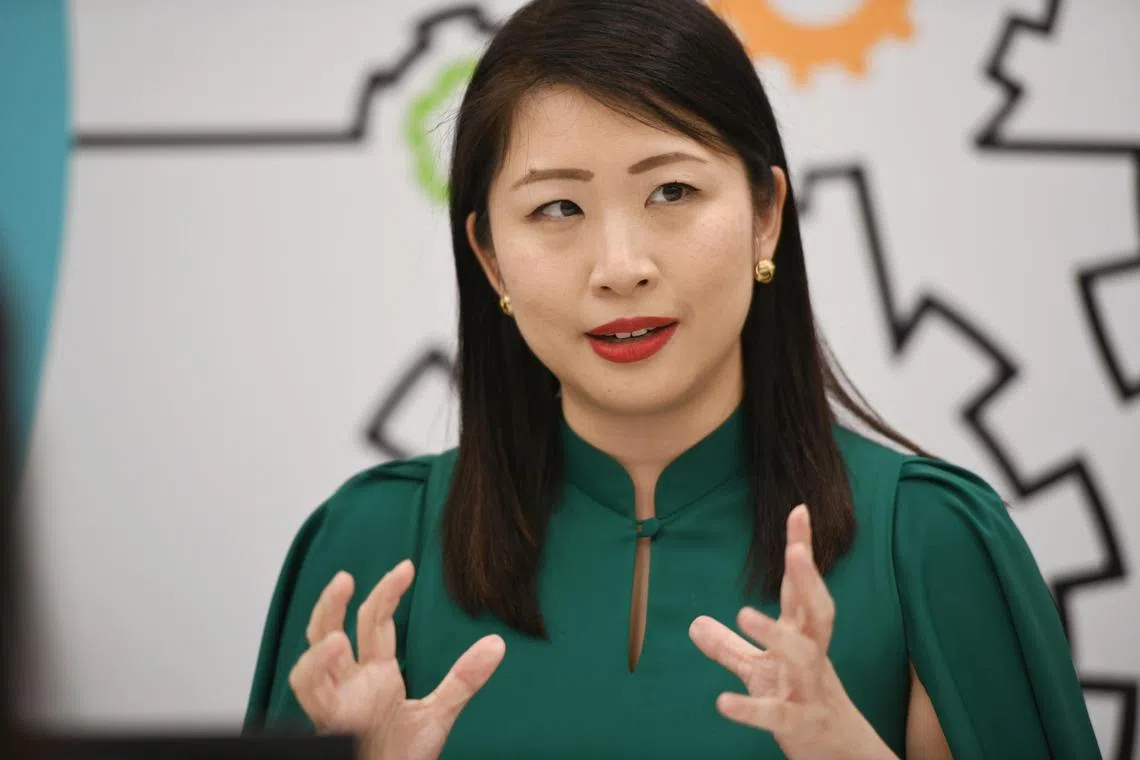MAS to add phasing out of coal-fired power plants in draft guidelines for Singapore’s financial sector
Sign up now: Get ST's newsletters delivered to your inbox

The MAS says the scheme, named the Singapore Asia Taxonomy, will set out the criteria for the early retirement of these power plants.
PHOTO: AFP
Follow topic:
SINGAPORE - In a move that signals energy transition is a key element in Singapore’s decarbonisation pursuit, the central bank will now include the phasing out of coal-fired power plants in a classification scheme it is developing.
The Monetary Authority of Singapore (MAS) says the scheme, named the Singapore Asia Taxonomy, will set out the criteria for the early retirement of these power plants.
The taxonomy will be released for consultation in the next few weeks, MAS’ chief sustainability officer Gillian Tan, 44, said in a media interview on Tuesday.
It aims to help banks and other financial institutions identify and classify activities that can be considered green or transitioning towards green, so they can meet their net-zero goals faster.
The inclusion comes after the third consultation ended in March.
Given the extensive feedback MAS received following that, the final version of Singapore’s taxonomy that was expected to be released in June might come later.
Speaking in her first such interview, Ms Tan said MAS is working to ensure that the Singapore Asia Taxonomy is aligned with the European and China taxonomies.
The proposed taxonomy is crafted by the Green Finance Industry Taskforce, which is an industry-led initiative that is convened by MAS to quicken the development of green finance in Singapore.
Ms Tan said that banks will need to look at the range of guidance available, be it in Singapore or Asean, and “make their own assessments”.
Singapore’s three local banks have all mapped out their decarbonisation plans.
In terms of phasing out financing of the coal sector, OCBC Bank was the first South-east Asian bank to rule out financing new coal-fired power plants in April 2019.
Days later, DBS Bank said it would stop financing any new coal power assets. In May 2019, UOB pledged to stop funding coal-fired power plants to focus on funding renewable projects in the region.
Fossil fuels account for about 70 per cent of the Asia-Pacific region’s power and electricity generation. Coal accounts for almost 60 per cent of the total generation.
For Asia to transition well, there needs to be a comprehensive approach for energy transition that takes into account a few Asia-specific features, Ms Tan said.
As the region’s population and economies are still growing, demand for energy remains.
“We will need a just transition to take care of the social angles, including employment, what is the impact on communities that are still developing,” Ms Tan noted, adding that any approach to this topic will have to factor in the economics.
“Having looked at this space for a while, we think that what is key is accelerating the retirement of coal-fired power plants,” she said.

Chief sustainability officer at MAS Gillian Tan says the Singapore Asia Taxonomy will set out the criteria for the early retirement of these power plants.
ST PHOTO: SHINTARO TAY
Most of the coal-fired power plants in Asia are about 10 to 20 years old on average and have at least another 30 to 40 years left to go, Ms Tan added. “So we need to, difficult as it is, think about how we (can) decommission these plants early.”
She said that if a bank finances the early phase out of coal, it should only do so where it is helpful to the climate challenge and is credible.
So far, a lot of the early phase out models are premised on lowering the costs of borrowing so that the incumbents can be bought out and this, in turn, shortens the lifespan of a plant.
While this is helpful, the challenge is to scale and replicate this process. “If we could group together a set of power plants with the same set of characteristics, if you can standardise some of that, you can scale it,” said Ms Tan.
When asked, Professor Sumit Agarwal from NUS Business School said it is difficult to achieve net-zero carbon emission without energy transition, so it makes sense for Singapore to make it a central part of its decarbonisation agenda.

Ms Gillian Tan said that banks will need to look at the range of guidance available, be it in Singapore or Asean, and “make their own assessments”.
ST PHOTO: SHINTARO TAY
The economics, finance and real estate professor added that the phasing out of coal-fired power plants is the first place to start if Singapore wants to achieve net-zero status.
“The banks could give transition loans to coal plant owners to find alternatives to generate power. It will not be easy. They will have to innovate in technology,” he added.
Besides the inclusion of coal phase out, MAS will set out a road map for mandatory climate disclosures for Singapore financial institutions to align themselves with the International Sustainability Standards Board (ISSB) guidance.
The ISSB standards are being finalised and are expected to be issued with no surprises by the end of the second quarter.
Ms Tan, who was appointed in October 2022, is enjoying her role and described her journey so far as “lovely”.
She said her team looks primarily at identifying the gaps in the ecosystem or the market in order to figure out what needs to be done so that the problem can be solved.
Given Singapore’s strong finance ecosystem and experience in infrastructure and energy, she said the country is well-placed to solve challenging issues in sustainability and can nimbly bring together parties from all over to do so.


